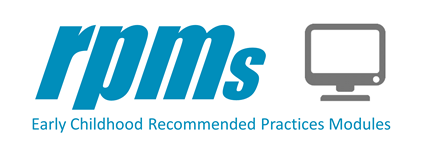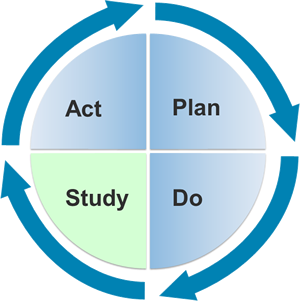Study
|
Now that you have practiced applying instructional practices, let’s take a step back and consider why and how you can gather and use the information to determine the following: |
|
1) Did you implement instructional practices the way they were intended?
You can use the following checklists as a self-reflection tool or with a mentor (e.g., program director, program coach, faculty), or with a larger team to discuss and reflect on the extent to which you implemented strategies that are in line with the DEC Recommended Practices on instruction.
- Naturalistic Instructional Practices Checklist
- Embedded Instructional Practices Checklist
- Systematic Instructional Practices Checklist
2) How do you know if the change has resulted in an improvement in child outcomes?
Gathering information over multiple points of time will help you determine if your changes in practice have promoted positive child outcomes. You may want to consider how much information needs to be gathered and by whom. You may also want to decide specific assessment tools or methods (observations, checklists, and parent interviews) that you will want to use to evaluate child outcomes. Tools could range from simple observation forms:
to more specific formative assessment tools to evaluate children’s progress in behavior and cognitive development like:
- mClass: Circle
A pre-K assessment tool designed to measure young children’s literacy and language skills (vocabulary, letter identification, and phonological awareness). It also includes scales for mathematical skills (numbers, counting shapes, and operations) and social-emotional skills. - myIGDIs
MyIGDIs are a set of research-based measures that are used to assess children’s growth and development. They are also brief, formal assessments of child status and change over time in relation to important skill acquisition related to early literacy and early numeracy.
3) What worked well and what didn’t? What changes can you make to improve using instructional practices?
Review all the assessment information you have gathered and reflect and note what worked well and what didn’t. What areas of your practice can you improve to bring about better child outcomes? You can work with your mentor or with the child’s family to make changes to your practice. You may use the following tools to reflect on your practice:

